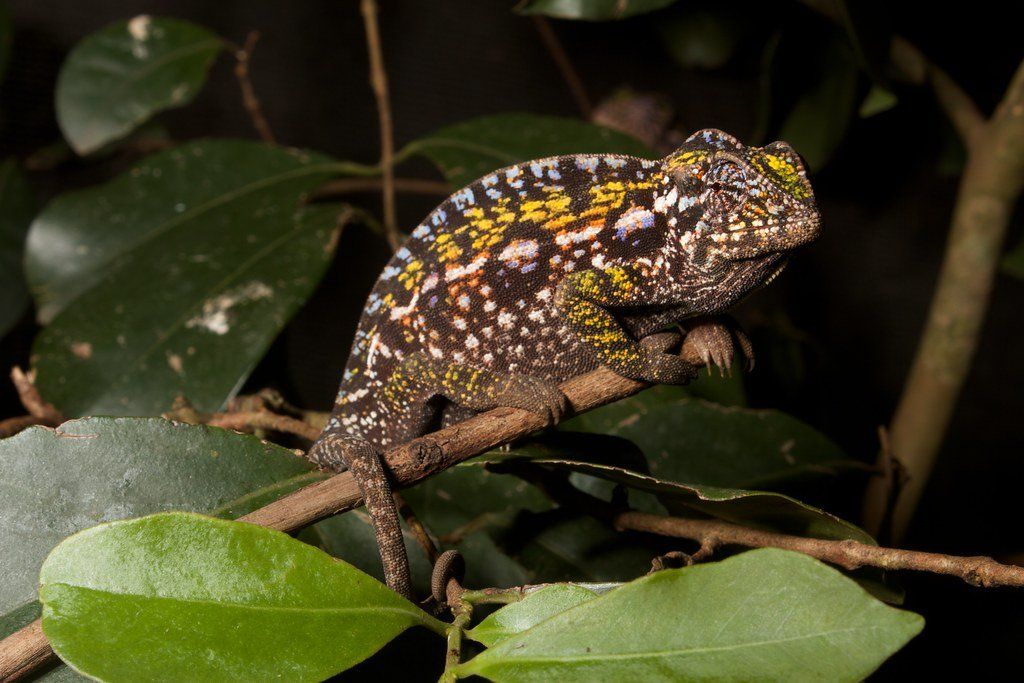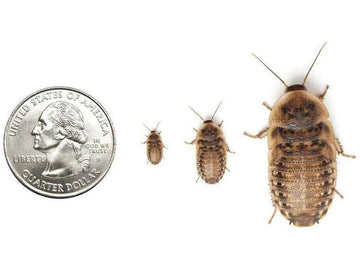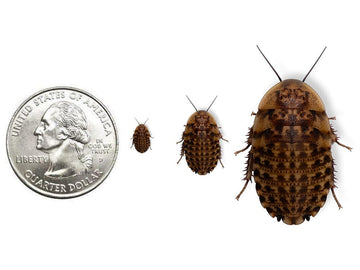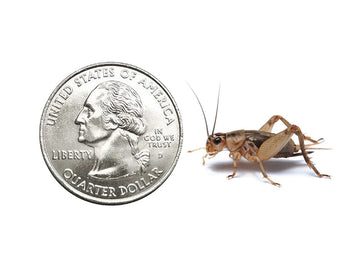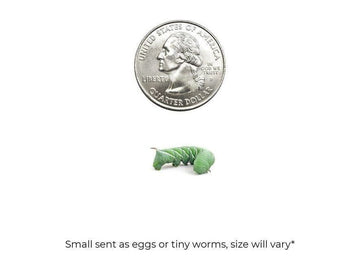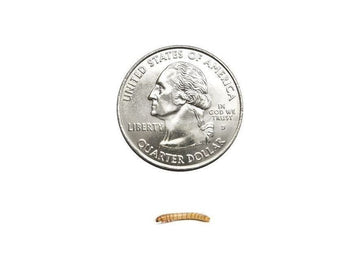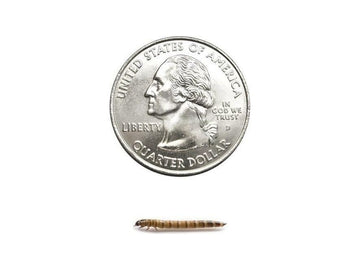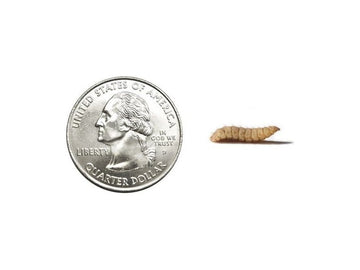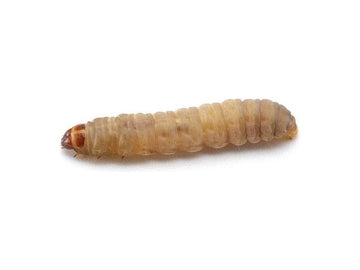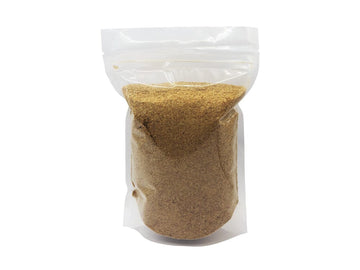The carpet chameleon (Furcifer lateralis) is also known as the jeweled chameleon. They are a 6-8” long, diurnal, arboreal lizard native to the island of Madagascar. They can be found in a variety of habitats, but prefer areas with small trees and shrubs, high humidity, and access to both shade and direct sunlight.
Like other chameleons, carpet chameleons have triangular heads, protruding eyes, vertically flattened bodies, zygodactylous feet, and a curled prehensile tail. Carpet chameleons are some of the most colorful chameleons in the world — while they can seem fairly plain at first glance, based on their mood and environmental conditions they can become quite spectacular with a pattern of green, black, white, blue, orange, yellow, red, and even purple! In this species, females are usually more colorful than males. They generally live about 2-3 years with good husbandry.
Minimum recommended terrarium size for carpet chameleons
The minimum recommended enclosure size for carpet chameleons is 18”L x 18”W x 24”H. Fully mesh enclosures are great for maximum ventilation, which is important for chameleons, but they are not required. If you live in a very dry climate a fully mesh enclosure can cause some issues, even with this more forgiving species. PVC enclosures are also a good option, especially if the front and top are ventilated. If air flow becomes an issue in any enclosure, a small computer fan can easily fix that problem.
Do carpet chameleons need UVB?
Yes! Carpet chameleons require UVB lighting for their survival. UVB lighting helps provide a clear day/night cycle, provides all of the vitamin D that your pet needs, strengthens the immune system, facilitates better digestion, and other benefits.
Here are the recommended UVB bulb choices for carpet chameleon:
The brands we recommend here have "kits" available (in 24" length), that come with the proper fixture. If not, be sure your fixture has a reflector. Also be sure that the fixture your UVB bulb is housed in does not have a clear plastic bulb cover, as plastic and glass block UVB.
Most people do a 12 hours on and 12 hour off lighting schedule. However, you can also do longer times on during the summer and shorter times on in the winter to mimic the actual sun.
Best temperature for carpet chameleons
Carpet chameleons need a basking area temperature of 90-95°F, and between 70-75°F in the coolest part of the enclosure. Night temps should drop down to 60-70°F. We recommend using a temperature gun to measure basking/surface temperatures. Ambient temperatures can be measured with digital probe thermometers.
For heat, we a halogen heat bulb placed above the basking branch. We do not recommend ceramic heat emitters (CHEs), red bulbs, or blue bulbs, as these are not as effective. If the bulb is too warm, reduce the heat with a lamp dimmer or rheostat. If the bulb is not warm enough, you should consider a higher wattage.
For best results, elevate the lamp above the top of the enclosure with the Exo Terra Light Bracket to create a wider basking area and more even heating.
Hydration for carpet chameleon
Carpet chameleons are a bit different from other chameleons. There is no set, universal humidity level required. Ventilation is important, you want to make sure you are not oversaturating your enclosure. It is okay to let the enclosure dry out during the day and have much higher humidity at night, such as running a fogger or mister.
Increase humidity and allow drinking by misting the enclosure every morning and night with a large pressure sprayer or automatic misting system. You can also consider a cool mist humidifier to run at night.
Reptile humidifiers and foggers should only be used with distilled water and require frequent disinfecting to keep your reptile from getting sick.
Best substrate for carpet chameleons
Carpet chameleons are strictly arboreal, so they don’t really need substrate to dig in or walk on. However, substrate can be a helpful way to maintain healthy humidity levels in glass or PVC enclosures. Appropriate soil substrates include Zoo Med ReptiSoil and Zoo Med Eco Earth, although the latter doesn’t work well with live plants. You can also consider a sand and peat moss 50/50 mixture. This substrate should be placed on top of a 1-2” layer of drainage material to prevent stagnation. Layer leaf litter on top of the substrate to further help with humidity.
If you have a mesh enclosure, you will need more water to keep things at optimal humidity, which means you’ll likely quickly saturate any substrate that you use. Instead, use a solid bottom with a drain into a large bucket. This will require some DIY, but is well worth the effort. You can likely find some DIY on YouTube or forums.
Females do lay eggs as well. If you are not doing bioactive, you'll still want to provide a location for her to lay eggs. You can use a container with sand and peat moss in a 50/50 mixture. You want it to be damp, but not over saturated.
How to decorate a carpet chameleon terrarium
An empty enclosure makes for a bored and stressed carpet chameleon, reducing its quality of life. Keep your pet relaxed and engaged with its environment with the strategic use of décor items that encourage it to exercise natural behaviors!
You will want plenty of vines, thin branches, and foliage to decorate your terrarium. Live plants are preferable to artificial plants because of the way they help with humidity. Arrange your décor in such a way that the chameleon has somewhere to hide as needed, with an open area under the lighting for basking.
Be sure to securely anchor all the climbing branches to the walls of the enclosure to avoid accidental falls.
What to feed to a carpet chameleon
Carpet chameleons are insectivores. This means that they only eat insects. Here’s a basic feeding schedule:
- Juveniles — daily, as much as they can eat
- Adults — 6-12 bugs depending on size/type, every other day
Feeder insect options: crickets, discoid roaches, dubia roaches, banana roaches, red runner roaches, grasshoppers, black soldier flies, hornworms, silkworms, superworms
We recommend a wide variety of insects, not just one or two different kinds!
Supplements
You will also want calcium and vitamin supplements to prevent your chameleon from developing a deficiency. This is our recommended schedule for supplementing a carpet chameleon:
Every feeding: (one) calcium without D3
2x/month: (one) multivitamin
It's always a good idea to make sure your feeder insects are well hydrated and gutloaded prior to feeding. We recommend Dubia Diet chow and Dubia Dew hydration crystals!
How to handle your carpet chameleon
Reptiles generally don’t appreciate petting and handling in the same way that dogs and cats do. Some tolerate it more than others, but generally carpet chameleons prefer to be left alone. That being said, some of them learn to tolerate low levels of handling and will walk onto their keeper’s hand when offered.
If you want to build a trusting relationship with your pet, you will need to develop a foundation of positive interactions. Treats and hand-feeding are very effective for teaching your chameleon that you are not something to be feared, since food can motivate your pet to move outside of its comfort zone. You can use soft-tipped feeding tongs, but holding the bugs just with your fingers is just fine also.
*This care sheet contains only very basic information. Although it’s a good introduction, please further your research with high-quality sources. The more you know, the better you will be able to care for your pet!

